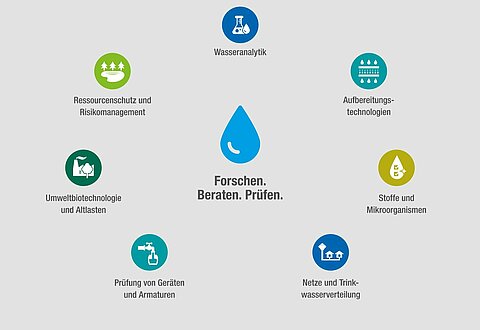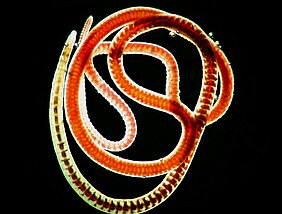Experimental investigation of selected organophosphonates to gain a comprehensive understanding of their environmental behaviour and to obtain a solid data basis for a realistic classification of their potential ecotoxicological effects.
Organophosphonates are increasingly being used as softening agents in detergents, fabric softeners, surface cleaners, automatic dishwashing detergents and in industrial processes, e.g. in the pulp and paper industry.
After application, the substances are nearly quantitatively discharged into the wastewater. Numerous literature sources describe the strong adsorption of phosphonates in the surface water-relevant pH range of pH 6 to pH 8 on mineral surfaces, activated sludge and sediment. Due to this property, eliminations of up to 95 % have been observed in wastewater treatment despite low biodegradability. Biological conversion in the sewage treatment process has not yet been described. The substances are considered to be poorly biodegradable. Residues in the treated wastewater are finally discharged into the receiving surface waters.
The aim of the research project is to gain a comprehensive understanding of the environmental behaviour of 2-phosponobutane-1,2,4-tricarboxylic acid (PBTC) and 1-hydroxyethane-1,1-dipohosphonic acid (HEDP) through targeted experimental investigations and thus to establish a solid data basis for a realistic classification of the potential ecotoxicological effects and a reliable risk assessment of the two substances on sediment organisms.
In preparation for the experiments, a literature study of currently available scientific data on the ecotoxicological properties of the two phosphonic acids is first carried out. The literature study also covers the compilation of general physico-chemical properties and available analytical methods. In addition to the literature study, the adsorption-desorption behaviour of the two substances in different waters (variation of hardness) is investigated on an artificial sediment, based on the OECD 106 test specification. In addition, the ecotoxicity of the two phosphonic acids is investigated in two sediment organisms (Lumbriculus variegatus, OECD TG 225 and Chironomus riparius, OECD TG 233) in accordance with standardised OECD test regulations.
The research results are intended to provide the basis for possible recommendations for action in the context of European and/or national regulatory provisions for the use of phosphonates in detergents.


![[Translate to English:] Prüfstelle-Produktprüfung_Teststand Test centre and product testing](/fileadmin/_processed_/0/9/csm_TZW-Karlsruhe_Pruefung_Geraete-Teststand_444204ae51.jpg)
























